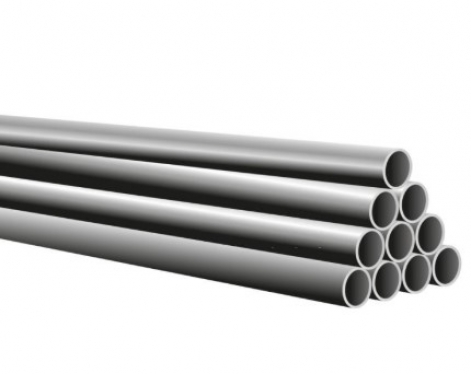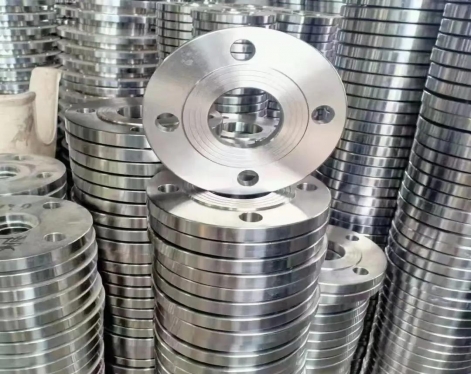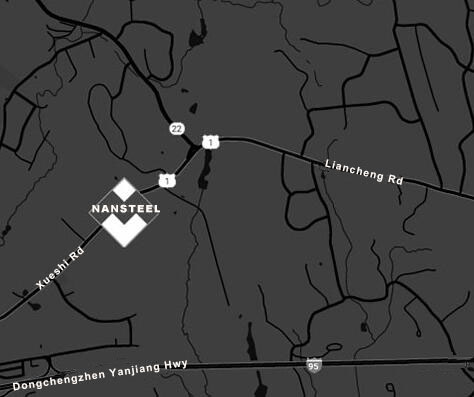In modern industrial manufacturing, mechanical tubes, due to their excellent performance and wide applicability, are widely used in a variety of industries, including machining, automotive manufacturing, engineering equipment, and agricultural machinery. Whether in high-strength structural parts, transmission systems, or hydraulic support components, mechanical tubes play a vital role. They are not only a fundamental material for structural load-bearing, but also a key component for achieving precision machining and efficient operation.
Definition and characteristics of mechanical tube
Mechanical tubes are generally made of high-quality carbon structural steel or alloy steel, usually seamless steel pipes, but high-quality ERW welded pipes can also be used. Compared with ordinary structural tubes, mechanical tubes have higher requirements for dimensional accuracy, surface finish, mechanical properties, etc., and can meet the needs of high-strength and high-precision processing. Its main features include:
High strength and high toughness: Through heat treatment or cold drawing process, it has good tensile strength and ductility.
High dimensional accuracy: The tolerances of outer diameter, inner diameter and wall thickness are strictly controlled, suitable for the processing of high-precision mechanical parts.
Good surface quality: high smoothness, reducing subsequent processing and improving assembly accuracy.
Strong customizability: different materials, specifications and performance parameters can be customized according to the purpose.

Specification range of mechanical tube
Mechanical tube typically has an outer diameter of 20mm to 350mm, with a wall thickness ranging from 2mm to 50mm. Lengths typically range from 4m to 12m, and can be cut to length based on customer needs. Small-diameter mechanical tube is often used in the machining of precision parts, while large-diameter, thick-walled tube is often used in the manufacture of load-bearing structural components or hydraulic cylinders.
Manufacturing process and precision of mechanical tube
Mechanical tubes can be manufactured using processes such as hot rolling, cold drawing, and cold rolling precision processing.
Hot rolled tubes have high structural strength and are suitable for medium and thick wall parts;
Cold drawn precision tubes have small dimensional tolerances and smooth surfaces and are often used in hydraulic cylinders, precision bushings and other components.
According to standards (such as GB/T 3639 and DIN 2391), the outer diameter tolerance of precision mechanical tubes can be controlled within ±0.10mm to ±0.75mm, and the straightness error can be as low as 0.5mm/m.
The main uses of mechanical tubes
1. Mechanical structural parts: used to manufacture load-bearing components such as shafts, support rods, rollers, hydraulic cylinders, etc. to ensure the structural strength and stability of the equipment.
2. Automobile and motorcycle parts: used in key locations such as drive shafts, shock absorbers, frames, and steering systems, requiring high fatigue resistance and impact resistance.
3. Hydraulic and pneumatic systems: used to manufacture hydraulic cylinders, oil cylinders, air cylinders, etc., which require smooth inner walls and precise dimensions to ensure sealing performance and movement stability.
4. Engineering machinery and agricultural equipment: used for excavator booms, loader brackets, agricultural machinery transmission parts, etc., requiring wear resistance, bending resistance, and impact resistance.
5. Energy and industrial equipment: Used in oil drilling equipment, power generation equipment, mining machinery, etc. to manufacture high-strength structural pipe fittings.
How to choose mechanical tube according to application?
1. Select the material of mechanical tube according to the purpose and stress
General mechanical structural parts: 20# steel and Q345B mechanical tubes can be used, which have moderate strength and are easy to process. They are suitable for frames, supports, rollers and other components.
Medium-load moving parts: 45# steel or ST52 mechanical tube is recommended, which has good toughness and high tensile strength and is suitable for transmission parts such as shafts and connecting rods.
High-strength or pressure-bearing parts: 40Cr and 42CrMo alloy mechanical tubes are selected. After quenching and tempering, they have strong wear resistance and are commonly used in hydraulic cylinders, drive shafts, oil cylinders, etc.
2. Select mechanical tube process according to precision requirements
Ordinary structural tubes: Choose hot-rolled seamless mechanical tubes, which are cost-effective and suitable for general load-bearing structures.
Precision machinery tubes: Select cold drawn or cold rolled precision machinery tubes, which have small dimensional tolerances and smooth surfaces and are suitable for hydraulic and pneumatic systems.
Welded structural parts: Choose ERW welded mechanical tube or Q345 welded tube, which has good welding performance and low cost.
3. Select mechanical tubee specifications and performance according to the use environment
High temperature environment: choose heat-resistant alloy steel such as 30CrMo and 15CrMo;
Low temperature or corrosive environment: galvanized or low alloy mechanical tube is recommended;
High impact environment: Use quenched and tempered pipe (40Cr, 42CrMo) to improve toughness and safety.
Conclusion
Overall, mechanical tube, with its high strength, high precision, and excellent processing properties, has become an indispensable material in modern manufacturing. It not only improves the overall performance and lifespan of mechanical equipment but also drives the continuous advancement of industrial technology. As manufacturing evolves towards high-end and intelligent manufacturing, the application areas of mechanical tubing will expand, and its performance requirements will continue to rise.
Read more: Advantages and Disadvantages of Mechanical Tubes
Definition and characteristics of mechanical tube
Mechanical tubes are generally made of high-quality carbon structural steel or alloy steel, usually seamless steel pipes, but high-quality ERW welded pipes can also be used. Compared with ordinary structural tubes, mechanical tubes have higher requirements for dimensional accuracy, surface finish, mechanical properties, etc., and can meet the needs of high-strength and high-precision processing. Its main features include:
High strength and high toughness: Through heat treatment or cold drawing process, it has good tensile strength and ductility.
High dimensional accuracy: The tolerances of outer diameter, inner diameter and wall thickness are strictly controlled, suitable for the processing of high-precision mechanical parts.
Good surface quality: high smoothness, reducing subsequent processing and improving assembly accuracy.
Strong customizability: different materials, specifications and performance parameters can be customized according to the purpose.

Specification range of mechanical tube
Mechanical tube typically has an outer diameter of 20mm to 350mm, with a wall thickness ranging from 2mm to 50mm. Lengths typically range from 4m to 12m, and can be cut to length based on customer needs. Small-diameter mechanical tube is often used in the machining of precision parts, while large-diameter, thick-walled tube is often used in the manufacture of load-bearing structural components or hydraulic cylinders.
Manufacturing process and precision of mechanical tube
Mechanical tubes can be manufactured using processes such as hot rolling, cold drawing, and cold rolling precision processing.
Hot rolled tubes have high structural strength and are suitable for medium and thick wall parts;
Cold drawn precision tubes have small dimensional tolerances and smooth surfaces and are often used in hydraulic cylinders, precision bushings and other components.
According to standards (such as GB/T 3639 and DIN 2391), the outer diameter tolerance of precision mechanical tubes can be controlled within ±0.10mm to ±0.75mm, and the straightness error can be as low as 0.5mm/m.
The main uses of mechanical tubes
1. Mechanical structural parts: used to manufacture load-bearing components such as shafts, support rods, rollers, hydraulic cylinders, etc. to ensure the structural strength and stability of the equipment.
2. Automobile and motorcycle parts: used in key locations such as drive shafts, shock absorbers, frames, and steering systems, requiring high fatigue resistance and impact resistance.
3. Hydraulic and pneumatic systems: used to manufacture hydraulic cylinders, oil cylinders, air cylinders, etc., which require smooth inner walls and precise dimensions to ensure sealing performance and movement stability.
4. Engineering machinery and agricultural equipment: used for excavator booms, loader brackets, agricultural machinery transmission parts, etc., requiring wear resistance, bending resistance, and impact resistance.
5. Energy and industrial equipment: Used in oil drilling equipment, power generation equipment, mining machinery, etc. to manufacture high-strength structural pipe fittings.
How to choose mechanical tube according to application?
1. Select the material of mechanical tube according to the purpose and stress
General mechanical structural parts: 20# steel and Q345B mechanical tubes can be used, which have moderate strength and are easy to process. They are suitable for frames, supports, rollers and other components.
Medium-load moving parts: 45# steel or ST52 mechanical tube is recommended, which has good toughness and high tensile strength and is suitable for transmission parts such as shafts and connecting rods.
High-strength or pressure-bearing parts: 40Cr and 42CrMo alloy mechanical tubes are selected. After quenching and tempering, they have strong wear resistance and are commonly used in hydraulic cylinders, drive shafts, oil cylinders, etc.
2. Select mechanical tube process according to precision requirements
Ordinary structural tubes: Choose hot-rolled seamless mechanical tubes, which are cost-effective and suitable for general load-bearing structures.
Precision machinery tubes: Select cold drawn or cold rolled precision machinery tubes, which have small dimensional tolerances and smooth surfaces and are suitable for hydraulic and pneumatic systems.
Welded structural parts: Choose ERW welded mechanical tube or Q345 welded tube, which has good welding performance and low cost.
3. Select mechanical tubee specifications and performance according to the use environment
High temperature environment: choose heat-resistant alloy steel such as 30CrMo and 15CrMo;
Low temperature or corrosive environment: galvanized or low alloy mechanical tube is recommended;
High impact environment: Use quenched and tempered pipe (40Cr, 42CrMo) to improve toughness and safety.
Conclusion
Overall, mechanical tube, with its high strength, high precision, and excellent processing properties, has become an indispensable material in modern manufacturing. It not only improves the overall performance and lifespan of mechanical equipment but also drives the continuous advancement of industrial technology. As manufacturing evolves towards high-end and intelligent manufacturing, the application areas of mechanical tubing will expand, and its performance requirements will continue to rise.
Read more: Advantages and Disadvantages of Mechanical Tubes









